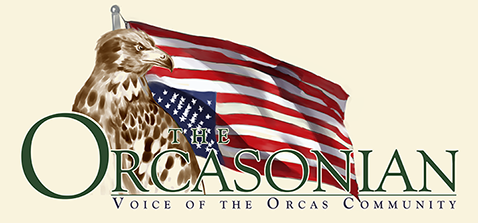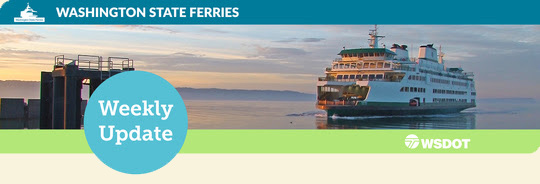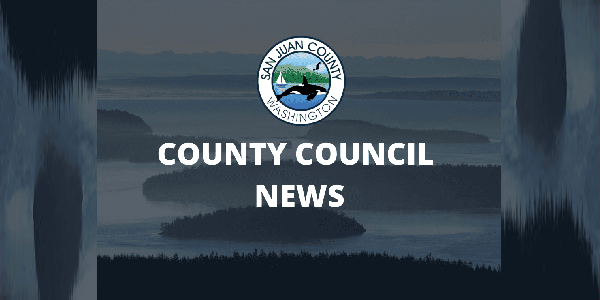||| FROM THE OFFICE OF REP. DEBRA LEKANOFF |||
In March, we said goodbye to a giant—a leader whose heart beat for the people of Washington. Speaker Frank Chopp was more than a legislator; he was a force of nature, a warrior for justice, and a man whose footsteps will forever be etched into the foundation of our state.
Frank didn’t just serve—he lifted. He carried the hopes of those who had been left behind, the dreams of those who had been overlooked, and the voices of those who had long fought to be heard. He was relentless in his pursuit of housing for every family, healthcare for every child, and opportunity for every worker. Through every battle, every late-night negotiation, every hard-fought win—he never lost sight of who he was fighting for.
Frank’s work was never about politics. It was about people. His legacy lives on in every home built for those in need, in every child who has a fair shot at a brighter future, in every corner of Washington where his impact continues to be felt.
Rest in power, Frank. You have given so much to this world. Now, we will carry your work forward.

The depth of Frank Chopp’s impact is reflected in the words of Community Action of Skagit County, an organization that continues to feel his legacy through his transformative work on housing and homelessness:
Frank Chopp was a true champion and a folk hero—for Skagit County, for Community Action and our sister agencies, and for the state of Washington. No matter the local and statewide strategy to address homelessness and our housing crisis, Frank Chopp was either the architect or one of the leading voices in moving it forward. That includes co-founding the Housing Trust Fund, launching Apple Health and Homes, and establishing and expanding local document recording fees as our state’s primary method to support preventing homelessness. Individually and together, these mighty tools have allowed our team at Community Action to change lives—and in some cases, literally save the lives—of children, Veterans, and families who otherwise would still be on our streets, living in vehicles, or bouncing from couch to couch. His is a positive impact that will last for decades.
For Community Action and so many of our sister organizations, the Housing Trust Fund has been the key source of capital funding for building housing that people who live and work in Skagit County can afford. Frank’s latest brainchild, Apple Health and Homes, just provided a $4.7 million infusion to our latest development, Kulshan View in Mount Vernon, a partnership with the Mount Vernon School District that will, when complete, support 48 households of homeless school children and their families—providing not only housing stability but also the potential for stability and success in their educational pathway. How could that not provide a positive impact over the generations?
As an organization that is also part of a network of 30 Community Action agencies that serve every community in our state, we’re also proud that Frank was an Executive Director of what was the Fremont Neighborhood Association at the time and is now Solid Ground, where Frank continued for several years serving on its board. A community organizer par excellence, Frank always had an eye on the most creative and progressive approaches to addressing our community’s and state’s most complex and vexing issues—all with an incomparable energy, a gift for making the abstract real, and an unflappable sense of the possible.
|
|
Steps to Sine Die!
Happy April! The days are getting longer, and spring is in the air! As we approach the conclusion of the 2025 legislative session, set to adjourn on April 27, here’s a roadmap of key milestones leading up to Sine Die:
April 2: Opposite House Policy Committee Cutoff
- This deadline marked the final day for policy committees to read in reports on bills from the opposite chamber, except for those in fiscal committees. Bills must have cleared this stage to remain under consideration.
April 8: Opposite House Fiscal Committee Cutoff
- Fiscal committees must complete their work on opposite house bills by this date. Bills with financial implications must be approved here to proceed.
April 16: Opposite House Cutoff
- By 5 p.m., all bills must have passed out of the opposite chamber. Exceptions include initiatives, budgets, matters necessary to implement budgets, and certain other measures.
April 27: Sine Die
The final day of the regular 2025 legislative session!
Budget Votes and Conferencing
Throughout April, intensive work occurs to finalize the state’s operating, capital, and transportation budgets:
- Operating Budget: Funds the day-to-day operations of state agencies, including education, healthcare, and public safety.
- Capital Budget: Finances construction projects such as schools, public buildings, and infrastructure improvements.
- Transportation Budget: Dedicated to transportation-related projects like road maintenance, public transit, and bridge repairs.
For more information, check out the Citizen’s Guide to the Washington State Budget!

Key Differences Between House and Senate 2025 Budget Proposals
Both the House and Senate have proposed their versions of the 2025-2027 operating budget, each reflecting our shared commitment to protecting essential services while addressing the state’s financial challenges. However, there are notable differences between the two proposals that will shape the final budget agreement.
Shared Commitments:
Both the House and Senate budgets prioritize maintaining funding for key areas, including:
- Education: Continued investments in K-12 and higher education, including special education funding.
- Healthcare: Ensuring access to medical services, mental health support, and public health initiatives.
- Housing and Food Assistance: Addressing homelessness, shelter capacity, and food insecurity.
- Transportation and Infrastructure: Funding for roads, transit, and environmental sustainability projects.
- Public Safety: Investments in law enforcement training, emergency response, and community-based crime prevention programs.
The Differences:
While the overarching priorities remain aligned, the House and Senate proposals differ in their funding levels and policy approaches across several areas:
|
Area |
House Proposal |
Senate Proposal |
|
Total Budget |
$77.8 billion – Maintains existing services and introduces targeted investments while balancing long-term fiscal responsibility. |
$78.5 billion – Slightly larger budget with additional spending on certain areas but also includes cost-saving measures such as furloughs. |
|
K-12 Education |
Allocates $1.1 billion for special education and local effort assistance to help school districts maintain quality education. |
Allocates $1 billion for special education and $175 million for school materials, supplies, and operational costs. |
|
Childcare & Early Learning |
Delays expansions of the Fair Start for Kids Act, saving $734 million over four years while preserving core services. |
Similar delays, though exact funding levels differ slightly, with some focus on alternative early learning initiatives. |
|
Housing & Food Assistance |
Provides $117 million to local governments for shelter beds and $93 million to maintain emergency food assistance programs. |
Allocates $93 million for food assistance and $78 million for local housing programs, with a focus on rapid rehousing efforts. |
|
State Employee Compensation |
Maintains current salaries and benefits for state employees, avoiding furloughs or pay cuts. |
Implements furloughs for certain state employees to reduce costs, aiming to generate savings while minimizing service disruptions. |
|
Revenue Generation |
Proposes a Financial Intangible Assets Tax on high-value financial holdings and adjusts property tax growth limits. |
Suggests a financial intangibles tax on individuals with over $50 million in assets and introduces a payroll tax on high earners. |
What Happens Next?
Both the House and Senate must now work to reconcile their differences in the final budget negotiation process. As your representative, I am committed to advocating for a budget that reflects our community’s values and priorities, ensuring that we invest wisely in education, housing, healthcare, and essential public services while maintaining fiscal responsibility.
I value your input during this process. If you have thoughts, concerns, or priorities you’d like me to consider, please feel free to reach out to my office.
|
|
Investing in Our Community: Local Projects Funded in Capital Budget Proposals
I’m excited to share some great news from Olympia that will have a lasting positive impact on our communities! This year’s capital budget proposals, including both the House and Senate proposals, bring critical funding to a wide variety of local projects. These projects will strengthen our infrastructure, expand access to services, and support community-driven initiatives. Here’s a look at some of the investments coming to our district:
-
Port of Skagit Agricultural Innovation Center – $515,000 will go toward expanding and upgrading the granary, supporting our agricultural community and enhancing innovation in this vital sector.
-
Pickford Theater (Bellingham) – $237,000 to support the continued vibrancy of this historic theater, which brings arts and culture to our region. (Technically a 42nd LD project, but an important asset for all of us!)
-
Anacortes Early Learning Center’s Whitney Campus – $41,000 to improve this center, helping young children get the best possible start in life. (The Senate budget matched this funding at $42,000.)
-
Pea Patch Community Campus – A substantial $3,000,000 investment to enhance this beloved community space where people of all ages come together to grow, learn, and connect.
-
Skagit PUD Fiber Extension – $530,000 will extend fiber infrastructure to more homes and businesses, improving internet access and bridging the digital divide in our rural areas.
-
Lopez Island Pool – $523,000 to maintain and upgrade the Lopez Island Pool, ensuring this essential resource for recreation and wellness remains a vibrant community hub.
-
Lopez Food Center – $361,000 to support this vital food distribution center, helping families access healthy and affordable food.
-
Nooksack Water Adjudication Facility Needs – $1,250,000 to address critical facility needs in the Nooksack area, supporting sustainable water management for the region.
-
Samish Nation Summit Park Building – $206,000 to enhance the Summit Park Building for the Samish Nation, strengthening cultural and community connections.
Building Communities Fund (Commerce Grants):
Through the Building Communities Fund program, additional grants have been secured for even more critical needs:
-
Pea Patch Lane Community Services – $2,000,000 to improve community services at Pea Patch Lane, fostering greater access and opportunity for residents.
-
Lopez Food Center – An additional $1,687,000 to continue supporting food security on Lopez Island.
Youth and Recreation:
-
Lopez Swim Center – $263,000 for facility upgrades through the Youth Recreational Facilities Program.
Libraries:
Our libraries are key to the intellectual and cultural life of our communities, and I’m proud to announce the following funding for renovations:
-
Lopez Island Library – $277,000 for much-needed improvements.
-
Orcas Island Library – $294,000 to help bring modernized resources to this community hub.
These projects reflect our shared values of sustainability, innovation, and community resilience. From enhancing access to education, supporting local agriculture, and improving cultural facilities, these investments are the building blocks of a stronger future for all of us. I’m honored to have been part of securing these funds for our district, and I look forward to seeing the positive impact they will have.
|
|
Healing Our Communities and Healing One Washington
Washington state is taking a monumental step toward addressing the opioid crisis and ensuring that Tribal communities have the resources they need to heal. As part of our Heal One Washington initiative, we have fought for critical investments in behavioral health and substance use disorder treatment, including direct support for the new detoxification and recovery center on Lummi Nation lands.
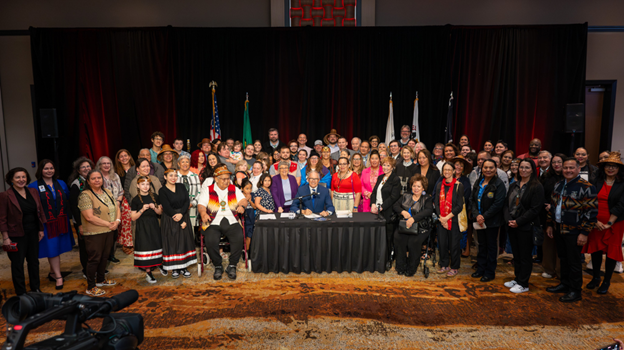
Governor Inslee signing the Heal One Washington package in March 2024.
The Lummi Nation’s detox center—the first of its kind on Tribal land in Washington—is a groundbreaking development that will provide essential 24/7 withdrawal management and stabilization services. This 16-bed secure residential facility will allow individuals to heal in a supportive environment, close to their families and culture. With healing spaces, a dining area, and conference rooms, the center is designed to offer comprehensive care that respects the traditions and needs of the community.
The House budget prioritizes funding for Tribal substance use disorder and behavioral health facilities, reinforcing our commitment to healthcare equity and recognizing the vital role Tribes play in healing all of Washington—where 80% of patients treated at Tribal facilities are non-Tribal Washingtonians. Through Heal One Washington, we secured $55.1 million in capital investments to support these efforts, ensuring Tribes have the resources to combat addiction and provide culturally rooted care. At the federal level, U.S. Representative Rick Larsen has championed this cause, advocating for over $10 million to support Lummi Nation’s fentanyl emergency and detox services.
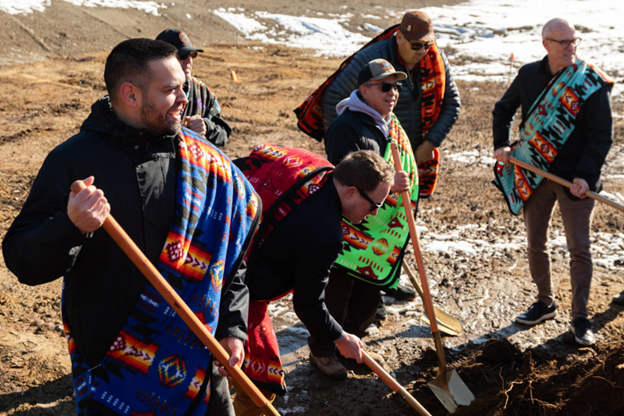
Lummi Nation Chairman Anthony Hillaire, left, is joined by other dignitaries Feb. 14 to break ground on the secure residential stabilization center.
The opioid crisis has taken too many lives, and the Lummi Nation is leading the way in creating solutions that work for Washington. I was honored to support legislation that helps fund this center, and I stand with Tribal leaders in our shared mission to build a healthier future.
Together, through Heal One Washington, we are continuing to make strides to address addiction, support recovery, and uphold our promise to Indigenous communities. The groundbreaking of this detox center marks a new chapter in our efforts to heal, one Washingtonian at a time.
|
|
Restoring Our Salmon, Honoring Our Treaties
Salmon are the heartbeat of Washington—woven into our culture, our economy, and our way of life. For our Tribal Nations, salmon are more than just fish; they are sacred. But our salmon runs are in crisis, and we are out of time.
Years ago, the courts affirmed what our Tribes have always known: the right to fish is meaningless if there are no fish to catch. The U.S. v. Washington decision made it clear—the state must remove culverts that block salmon from reaching their spawning grounds. Every year we wait, we lose more salmon, more habitat, and more of what makes Washington home.

This session, we are taking action. The Senate has proposed a bold $5 billion plan to accelerate culvert removal and unlock critical habitat. Their plan would be funded through a bond, ensuring we meet our obligations before it’s too late. In the House, we’ve committed more than $3.1 billion over the next three budget cycles, keeping this work moving forward with dedicated funding through the transportation budget.
Additionally, legislative efforts are underway to streamline environmental permitting for salmon recovery projects. House Bill 1208 and its companion, Senate Bill 5155, seek to extend programs that facilitate the permitting process, enabling more efficient implementation of recovery initiatives.
Both plans share a common goal: restoring our salmon, fulfilling our treaty obligations, and protecting Washington’s future. But we must go beyond culverts—real salmon recovery means investing in habitat restoration, clean water, and stronger protections for our rivers and streams. That’s why we’re advancing legislation to streamline permitting for salmon recovery projects, cutting through the red tape so that restoration efforts can move faster and more efficiently.
The work ahead is not just about policy—it’s about people. It’s about the generations of Tribal fishers who have fought to protect their way of life. It’s about the local communities who depend on healthy rivers, and the families who pass down the tradition of fishing from one generation to the next. It’s about healing the waters, the land, and ourselves.
Together, we will honor our treaties, restore our salmon, and heal one Washington.
|
|
Tell Your Story
Thank you so much to those who shared their experiences with us through the survey. Your stories are invaluable, and we appreciate your openness in discussing the challenges you’re facing. If you haven’t had a chance to take the survey yet, we encourage you to do so. Your voice is powerful and deserves to be heard.
 |
These stories reflect the deep concerns and hardships many are facing in our community. We stand with you in advocating for real solutions and will continue to work tirelessly for your well-being.
|
|

Thank you again for sharing your voices. Together, we will move forward and work toward a brighter future for all.
I am here for you!
**If you are reading theOrcasonian for free, thank your fellow islanders. If you would like to support theOrcasonian CLICK HERE to set your modestly-priced, voluntary subscription. Otherwise, no worries; we’re happy to share with you.**
